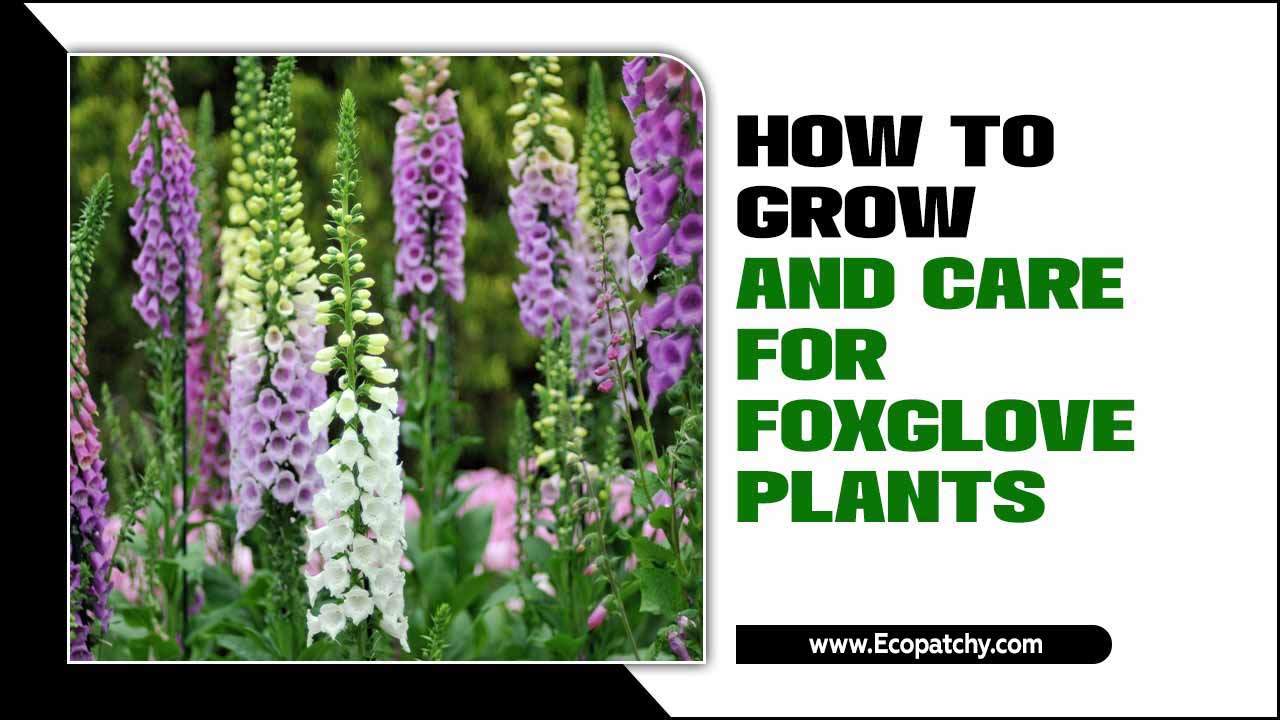Hollyhocks are a stunning addition to any garden with their tall stalks of vibrant, bell-shaped flowers. These hardy, long-blooming plants are a favorite among gardeners for their ease of care and ability to attract pollinators.
Whether you are a seasoned green thumb or a novice gardener, learning how to grow hollyhocks is essential for any flower enthusiast. Here, we’ll discuss the best location for planting, selecting the right variety for your garden, propagating hollyhocks, supporting their height, fertilizing and watering them correctly, managing pests and diseases proactively, and protecting overwintering plants.
We’ll also discuss saving seeds for future propagation and caring for the Queen of the Night plant (Epiphyllum Oxypetalum). By the end of this guide, you’ll be well-equipped to grow these beautiful flowers in your garden.
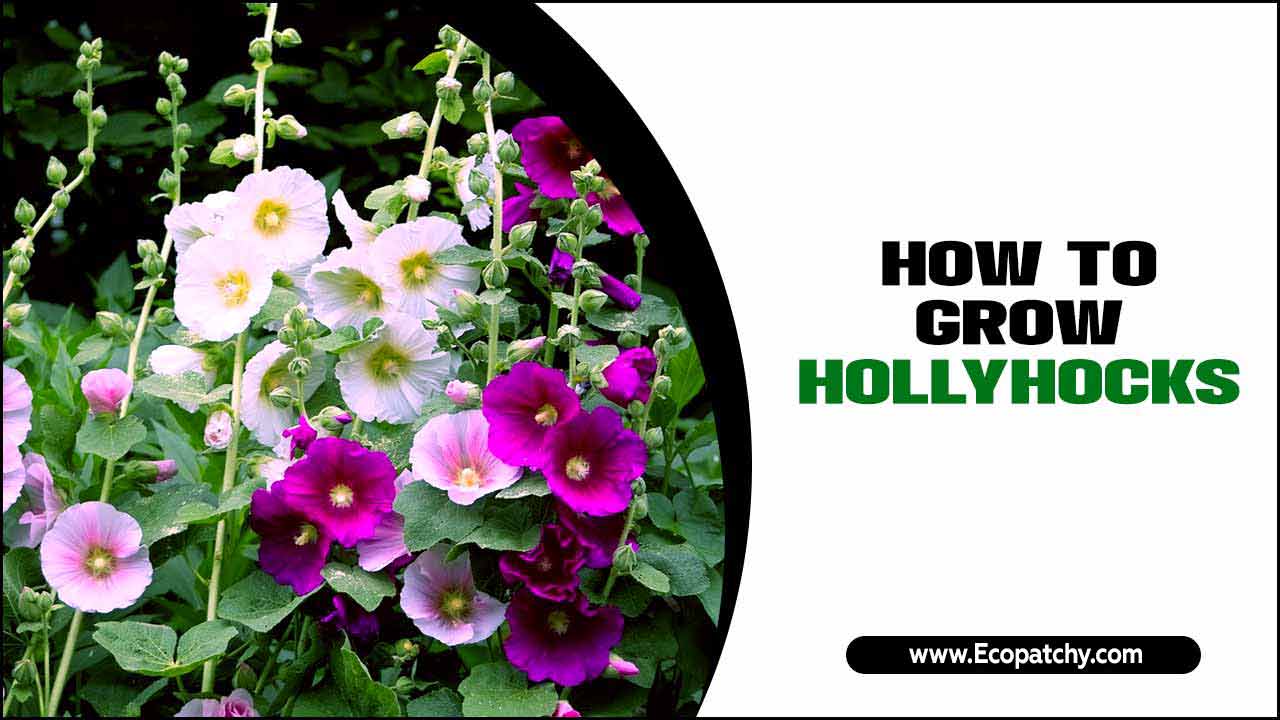
Characteristics Of Hollyhocks
Hollyhocks are tall flowering plants that add a vertical element to gardens, creating an eye-catching display. With their diverse range of colors, from vibrant pinks and purples to soft pastels, hollyhocks are visually appealing and enhance the beauty of any landscape.
These plants are biennial or short-lived perennials, typically blooming every other year, adding an element of anticipation to your garden. The large, palmate foliage of hollyhocks adds texture and interest, creating a lush backdrop for other plants. Also, pollinators love hollyhocks, making them a great choice for attracting beneficial insects.
How To Grow Hollyhocks – A Step-By-Step Guide

To successfully grow hollyhocks, start by sowing the seeds indoors around 6-8 weeks before the last frost date. Once the danger of frost has passed, transplant the seedlings to an outdoor location with plenty of sunlight. Ensure that the soil is well-draining by adding organic matter to improve fertility and drainage.
It is important to regularly water hollyhocks, keeping the soil moist but not waterlogged. Following these steps on how to grow hollyhocks, you can cultivate healthy hollyhocks in your garden, adorned with their wonderful flowers. Remember to remember common issues such as hollyhock rust, Japanese beetles, and spider mites.
1: Plant Hollyhocks In The Right Growing Location
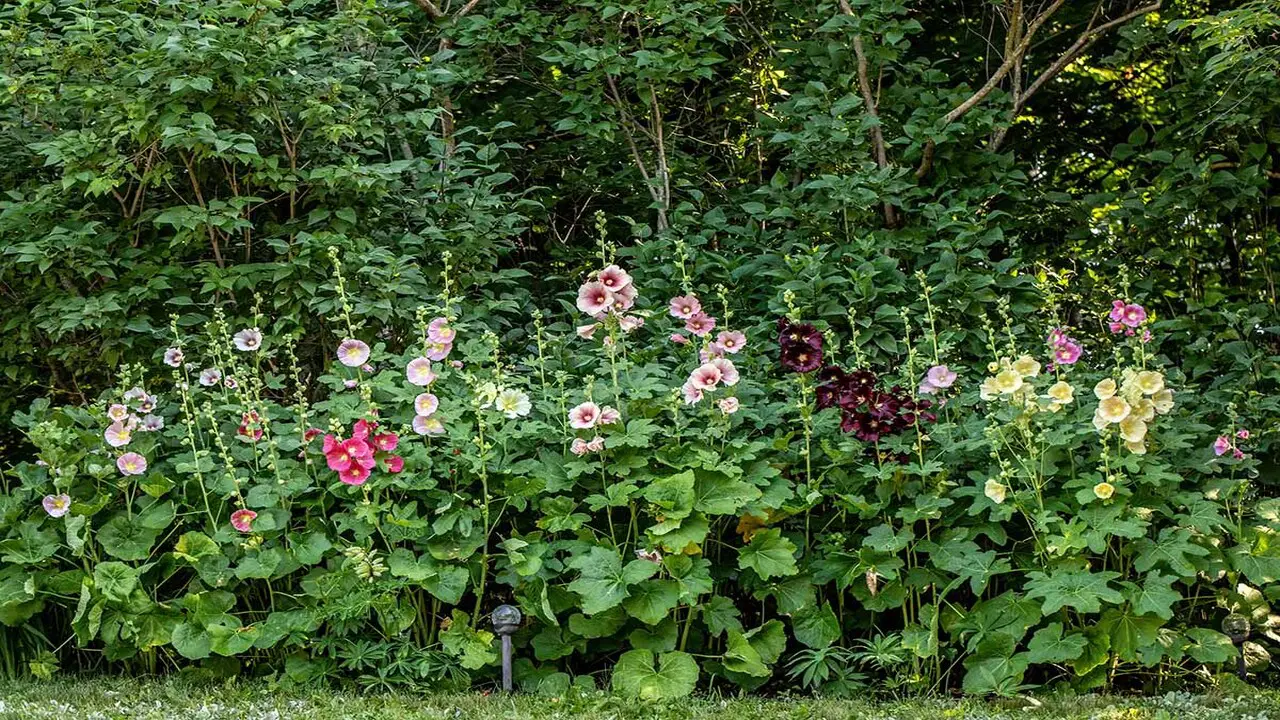
To ensure the successful growth of hollyhocks, choosing the right growing location is important. These beautiful flowers thrive in full sun and well-drained soil. Good air circulation is also essential to prevent diseases, so selecting a location with ample airflow is recommended.
Consider the height of the hollyhock variety you are planting, as taller varieties may require staking for support. Avoid planting them near trees or other tall plants that may shade them, as hollyhocks prefer plenty of sunlight. For optimal results, plant hollyhocks in the spring or fall.
2: Choose The Best Hollyhock Variety To Suit Your Garden
When selecting a hollyhock variety for your garden, consider its height and color to ensure it seamlessly blends with your garden’s aesthetic. Opt for disease-resistant varieties like Alcea rosea to minimize the risk of hollyhock rust and other plant diseases.
Another factor to consider is whether you prefer a biennial or perennial hollyhock. This choice will determine the flowering time and lifespan of the plant. Additionally, be mindful of the sunlight requirements of your hollyhock variety. While some varieties thrive in full sun, others prefer partial shade. Considering these factors, you can select the perfect hollyhock variety for your garden.
3: Propagating Hollyhocks: Choose Seeds, Seedlings, Or Cuttings
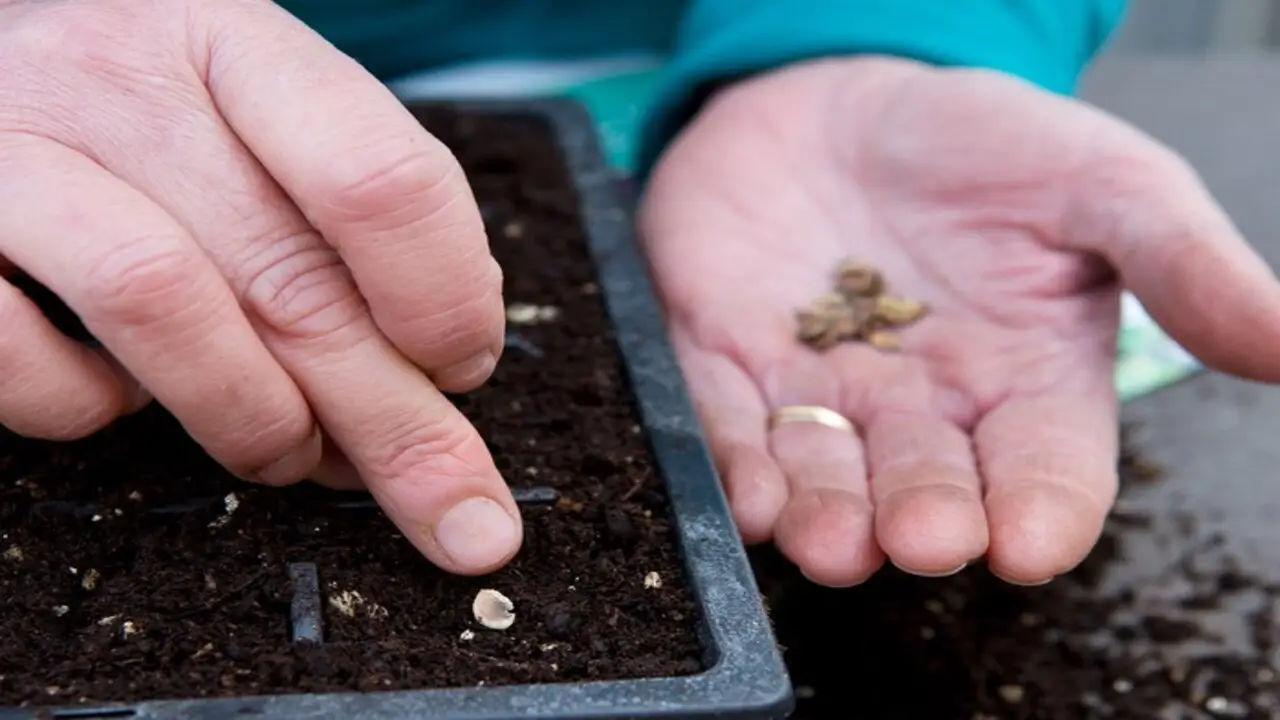
Hollyhocks can be propagated through various methods, including seeds, seedlings, or cuttings. To grow hollyhocks from seeds, collect them in the fall and sow them in the spring after the last frost. For seedlings, start them indoors during winter and then transplant them outdoors in the spring.
Another option is to take cuttings from the base of mature plants and root them in moist soil. Whichever method you choose, ensure proper care and maintenance, such as regular watering and fertilization, to ensure successful propagation. By choosing the right propagation method, you can easily expand your hollyhock garden.
4: Give The Hollyhock Plants Room To Grow
To ensure the healthy growth and development of your hollyhocks, it’s important to give them sufficient space. Planting the seeds or seedlings at least 2 feet apart will allow the plants to spread and thrive. Consider the mature height of the variety you choose and plant accordingly, as this will prevent overcrowding and competition for sunlight.
Adequate spacing also promotes better air circulation, which can help prevent the spread of diseases like hollyhock rust. You’ll be rewarded with beautiful flowers and a thriving garden by providing enough room for your hollyhock plants to grow.
5: Provide Support
Hollyhocks, known for their tall growth, require support as they mature. You can use stakes or cages that prop up the plant to provide support. Gently tie the stem to the support with garden twine, making sure not to tie too tightly as it could damage the stem. This support system helps prevent the plant from bending or breaking during strong winds. By providing support, you ensure your hollyhocks stay upright and healthy, enhancing their overall appearance in your garden.
6: Fertilize And Water Hollyhocks Regularly
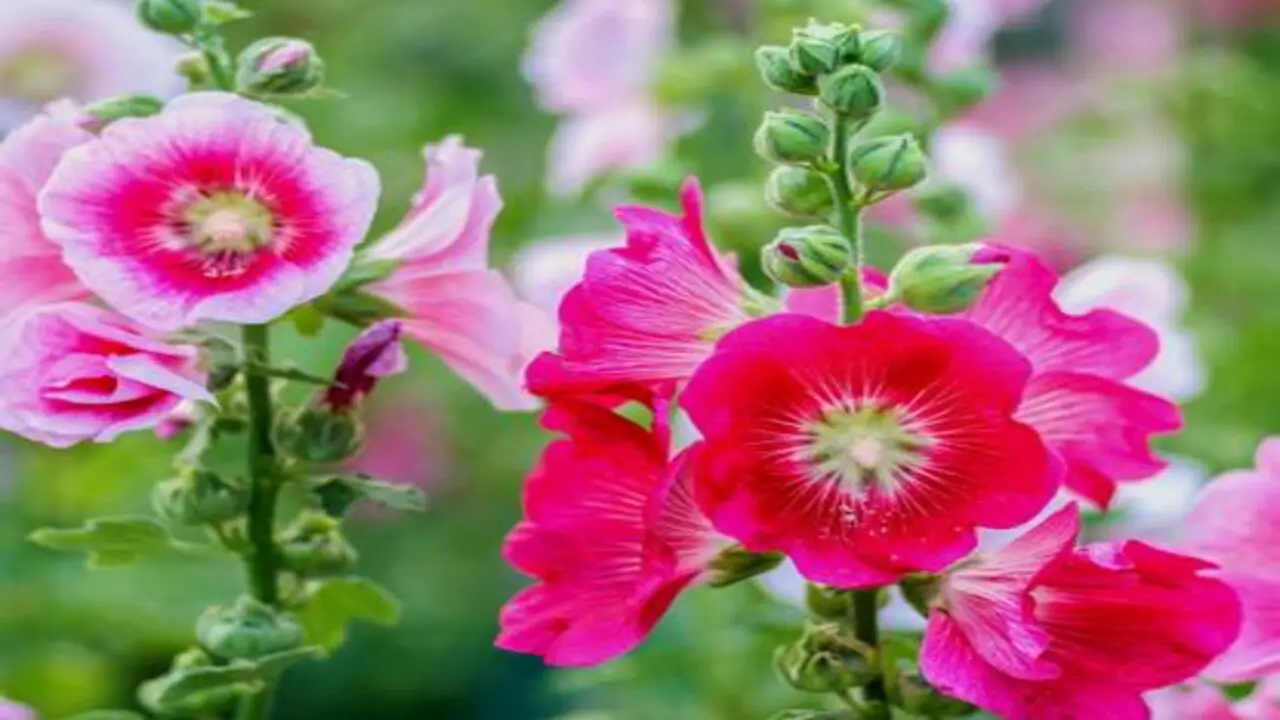
To ensure that your hollyhocks thrive, providing them with well-draining soil and regular fertilization is important. Using a balanced, slow-release fertilizer every 4-6 weeks during the growing season will give them the nutrients they need to flourish.
Additionally, watering hollyhocks deeply once a week or more frequently during hot, dry weather is essential for their hydration. It’s crucial to avoid getting water on the leaves or flowers, as this can promote disease. Consider using a soaker hose or drip irrigation system to prevent wetting the foliage. Mulching around hollyhocks will help retain moisture and suppress weeds, creating an ideal growing environment.
7: Deadhead And Remove Spent Flowers
Regular deadheading and removing spent flowers is crucial for the healthy growth of hollyhocks. By deadheading, you remove the faded flowers, which stimulates new growth and prolongs the blooming period. Additionally, this process prevents the plant from wasting energy on seed production, ensuring its vitality. To deadhead, use clean and sharp garden shears or scissors to cut just below the flower head.
This should be done regularly throughout the growing season, especially during peak bloom. By removing spent flowers, you also minimize the risk of disease and insect problems by reducing decaying plant material in the garden. Remember to dispose of the spent flowers in a compost bin or trash rather than leaving them on the ground.
8: Manage Pests And Problems Proactively
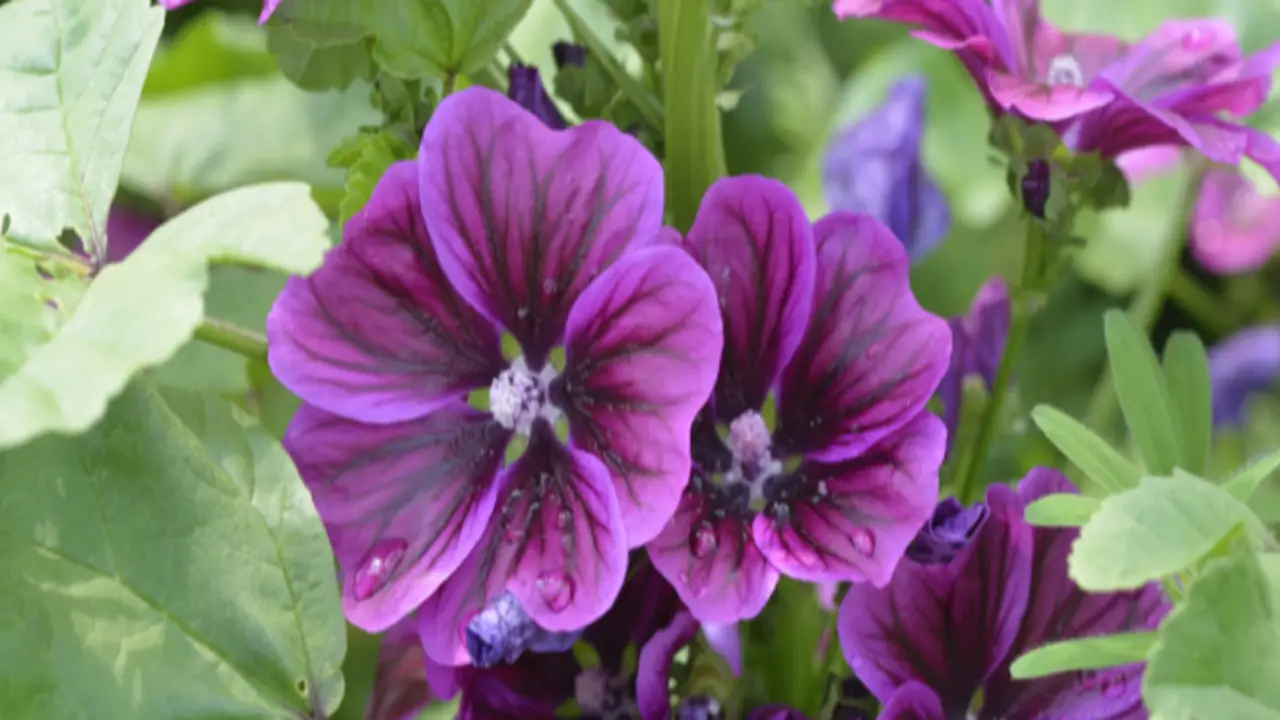
To ensure the health and vitality of your hollyhocks, it’s important to manage pests and problems proactively. Common pests and diseases affecting hollyhocks include aphids, rust, and powdery mildew. You can combat these issues by using natural pest control methods such as introducing beneficial insects or insecticidal soap. It’s essential to watch for signs of problems and address them promptly to prevent further damage.
Practice good garden hygiene by removing debris and fallen leaves to prevent the buildup of pests and diseases. Consider using organic fertilizers and soil amendments to promote healthy growth and resistance to pests and diseases. If you’ve had previous issues, rotating your crops can also help.
9: Keep A Watchful Eye Out For Common Hollyhock Diseases
Hollyhocks, such as the popular Alcea Rosea cultivar, are beautiful additions to any cottage garden. However, they can be susceptible to various diseases, including rust, powdery mildew, and leaf spot. As a gardener, it’s important to watch for symptoms of these diseases, such as yellowing or browning leaves, powdery white or rusty spots, or even leaf drops.
To prevent these diseases, ensure you plant hollyhocks in well-drained soil and give them enough space for proper air circulation. If your plants do become infected, you can use organic fungicides or natural remedies like baking soda and water to treat them. Additionally, remember to remove any infected leaves and debris from around the plants to prevent further spread of the disease. By practicing good garden sanitation and staying vigilant, you can help ensure the health and vitality of your hollyhocks.
10: Protect Overwintering Plants
To protect overwintering plants like hollyhocks, there are several steps you can take. Firstly, cover the plants with a thick layer of mulch to insulate the roots and prevent freezing. This will help them survive the harsh winter months. Use stakes or netting to protect the plants from heavy snow and wind damage. Before winter sets in, removing any dead or damaged leaves is important to prevent the spread of disease.
After the first hard frost, cut the stems of the plants down to just a few inches above the ground. Applying a slow-release fertilizer in the fall will promote healthy growth in the spring. Lastly, water the plants deeply before the ground freezes to ensure they have enough moisture to survive. Following these steps, you can protect your hollyhocks during the winter months and ensure their healthy growth in the next season.
Queen Of The Night Plant – How To Care For Epiphyllum Oxypetalum
Epiphyllum Oxypetalum, commonly known as the Queen of the Night Plant, is a stunning and exotic addition to any garden. To ensure proper care, there are a few key points to remember. First, choose a suitable location for your Epiphyllum Oxypetalum, preferably in a spot with partial shade and protection from harsh sunlight.
Second, provide well-drained soil and avoid overwatering, as this can lead to root rot. Additionally, be mindful of pests such as spider mites and Japanese beetles, which can damage the plant. Lastly, deadhead the flowers regularly to encourage new blooms and remove any yellow spots or rust disease that may occur. By following these care tips, you can enjoy the beauty of the Queen of the Night Plant in your garden for years to come.
Saving Hollyhock Seeds For Future Propagation

Saving hollyhock seeds is an important step in growing these beautiful flowers year after year. To save hollyhock seeds for future propagation, wait until the seed pods turn brown and begin to split open. Gently collect the pods and place them in a paper bag or envelope to dry further.
Once completely dried, gently crush the pods to release the seeds. Remove any debris or trash from the seeds and store them in a cool, dry place until ready to sow them. By saving hollyhock seeds, you can ensure your garden will be filled with these stunning blooms for future seasons.
Conclusion
To successfully how to grow hollyhocks, follow these step-by-step guidelines. Start by selecting the right location and variety for your garden. Whether you choose seeds, seedlings, or cuttings, propagate hollyhocks effectively. Give the plants enough space to grow and provide the necessary support. Regularly fertilize and water them; don’t forget to deadhead and remove spent flowers.
Additionally, be proactive in managing pests and diseases and protect overwintering plants. Lastly, if you’re interested in saving hollyhock seeds for future propagation, learn how to do it effectively. By following these tips, you’ll have a flourishing hollyhock garden in no time. Happy gardening!
Frequently Asked Questions
1.Do Hollyhocks Come Back Every Year?
Ans: Yes, hollyhocks are a perennial plant, meaning they can return annually. However, they may need replanting every few years due to their shorter lifespan compared to other perennials. To ensure their return, provide proper care, including watering, fertilizing, pruning, and protecting from pests and diseases.
2.Where Is Best Place To Plant Hollyhocks?
Ans: The best place to plant hollyhocks is in a sunny location with well-draining soil. It’s important to choose an area sheltered from strong winds and provides enough space for the plants to grow, as they can reach heights of up to 9 feet. Consider planting them along fences, walls, or at the back of garden beds for maximum impact.
3.Where Is Best Place To Plant Hollyhocks?
Ans: Hollyhocks thrive in full sun to partial shade for optimal growth, requiring at least 6 hours of direct sunlight per day. They prefer well-drained soil that is rich in organic matter. Plant them in the back of a border, against a wall or fence for support, or near other tall plants or structures to provide protection from strong winds.
4.What Month Do You Plant Hollyhocks?
Ans: Hollyhocks are typically planted in the spring, after the last frost date. The best time for planting hollyhock seeds is in late April or early May. You can also start them indoors 6-8 weeks before the last frost and transplant them outdoors when ready. Choose a sunny spot with well-drained soil for optimal growth.
5.Can You Plant Hollyhocks In The Fall?
Ans: Hollyhocks can be planted in the fall in areas with mild winters. However, it is better to plant them in the spring in colder climates. Keep in mind that fall-planted hollyhocks may not flower until the following year. Ensure adequate water and protection from frost if planting in the fall.
6.What Are The Steps To Grow Hollyhocks From Seeds?
Ans: To grow hollyhocks from seeds, select a sunny location with well-drained soil. Sow the seeds directly into the ground in early spring or fall, covering them with a thin layer of soil and watering gently. Thin out seedlings once they reach a few inches tall for proper spacing.

